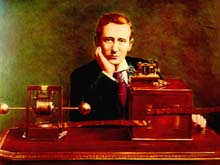 |
|
|
 |
|
|
Guglielmo Marconi sent the first wireless message over 100 years ago. Yet, it's a moment in time that inspires us today, because it shows us that technology can empower people to do amazing things.
To appreciate fully the impact of this event on today's technology, in particular radio, radar and television, we must first understand the remarkable achievements of the man himself and the events leading up to the formation of the world's first wireless telegraph company.
Guglielmo Marconi was born on 25 April in Bologna, Italy, second son of a wealthy Italian landowner and an Irish mother.
1894-96 First Transmitter – First Patent
The year before his first transmission, Marconi, at the age of 20, embarked on a study of the works of Heinrich Hertz (1857-1894). Marconi started his experiments on the application of Hertzian waves to the transmission and reception of messages over a distance, without wires, in late 1894 at the Villa Griffone at Pontecchio Bologna, Italy, the family home. He greatly improved on the performance of Hertz's apparatus. The distance for transmission and reception of signals was progressively increased, across a room, down the length of a corridor, from the house and then into fields.
In the early summer of 1895 and despite an intervening hill, Marconi achieved signal transmission and reception over a distance of about 2km. Success was indicated initially by the waving of a handkerchief and progressed to the need to fire a gun.
First Patent
In January 1896 the young Marconi began to consider applying for a patent for his invention and in February he travelled to Britain. Under the guidance of his cousin Henry Jameson Davis, he filed his final specification for the world's first patent for a system of telegraphy using Hertzian waves.
The British Patent number 12039 was filed on the 2nd June 1896.
In July of that year he demonstrated his apparatus to the Post Office and a historic demonstration took place at Three Mile Hill on Salisbury Plain on 2 September, with officials from the General Post Office the Navy and the Army present.
Many more experiments followed in 1897. Marconi returned to Salisbury Plain and achieved a range of 7 miles (11.2km). He also established communication across the Bristol Channel. The Channel tests were conducted under bad weather conditions. First attempts were unsuccessful but on the fourth day, with the aerial at 300 feet (92m) and using a 20 inch (0.5m) spark coil, a new record of 8.7 miles (14km) was achieved. One of the Morse messages sent was ‘let it be so'.
The Isle of Wight, off the south coast of England, was the scene of
many early Marconi experiments. In 1897 he set up an aerial and installed
his apparatus in the grounds of the Royal Needles Hotel, Alum Bay, and
succeeded first in communicating with two hired ferry boats and then with
a station set up at Madeira House in Bournemouth on the mainland.
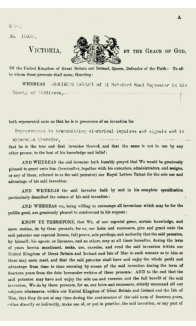 |
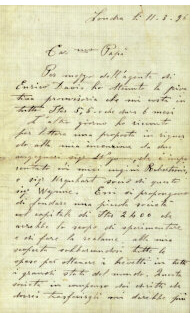 |
|
|
March 1896 (Courtesy Henry Willard Lende Collection, San Antonio, Texas) |
1897 World’s First Wireless Telegraph & Signal Company
In 1897 Marconi registered his company as the Wireless Telegraph and Signal Company.
Premises were needed for the new organisation. Marconi decided upon a place that was a relatively short distance from London and accessible by rail; Chelmsford was an ideal location. In December 1898, the first wireless factory in the world was set up in an old silk factory in Hall Street. The building still stands today.
The Wireless Telegraph and Signal Company changed names several times to:
The Wireless Telegraph and Signal Company is registered on the 20July
1897 and in 1898 The first wireless factory is set up in Hall St., Chelmsford
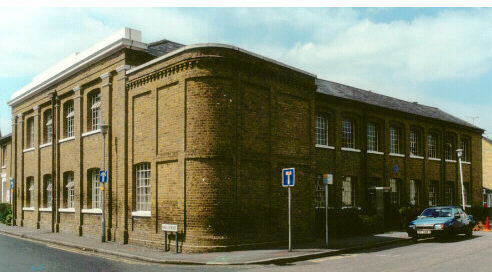 |
|
|
Today, the Hall Street building is owned by the Essex & Suffolk Water Company but Marconi Companies maintain a strong presence in Chelmsford, with Marconi Communications and Marconi Applied Technologies (the former EEV Ltd).
Marconi’s first aim in perfecting communication without wires had been to break the isolation of those at sea. The first life-saving possibilities of wireless were realised in 1899 when a wireless message was received from the East Goodwin lightship - which had been equipped with Marconi wireless apparatus. It had been rammed in dense fog by a steamship R.F. Matthews. A request was made for the assistance of a lifeboat.
In January 1909, over 1,700 people were rescued at sea when the S.S.
Republic was in collision with an Italian steamer, the Florida
in thick fog off the US East Coast. For two days in freezing conditions
Jack Binns, the Marconi radio operator aboard the Republic, sent
out a total of two hundred messages to help guide rescuing ships to his
stricken vessel’s position. Thanks to his messages, all but those passengers
killed by the initial impact were rescued. Binns received a special medal
for his services and Marconi himself presented him with a gold watch.
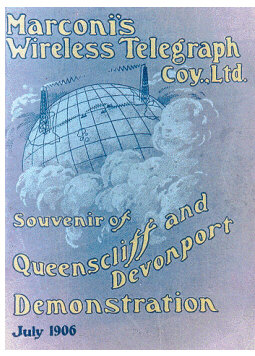 |
When the Titanic struck an iceberg and sank on 14 April 1912, the loss of life was truly terrible, but those who survived owed their lives to the distress calls from the Marconi wireless equipment on board. As Lord Samuel, Postmaster General at the time, stated: 'Those who have been saved have been saved through one man, Mr. Marconi and.....his wonderful invention.'
1900 Famous ‘7777’ Patent
The famous '7777' patent was granted on 26 April 1900, which documented a system for tuned coupled circuits and allowed simultaneous transmissions on different frequencies. Adjacent stations were now able to operate without interfering with one another and ranges were increased.
1900 also saw the Company name changed to Marconi's Wireless Telegraph Company.
The Marconi International Marine Communication Company Ltd. was formed on 25 April to take-over the maritime business of the Company.
1901 First Transatlantic Signal
In 1901, Marconi achieved communication over 198 miles between the Isle of Wight and the Lizard in Cornwall. This was a fitting limbering-up exercise for his marathon transatlantic attempt. It was a huge gamble in both scientific and financial terms for Marconi and his infant company. For the experiment, Poldhu in Cornwall was selected as the site for the British station and Cape Cod selected as the location to build the American Station. This site was later abandoned for a temporary installation at Signal Hill, St. John’s, Newfoundland.
On 12 December 1901, a blustering gale at Signal Hill made it difficult for Marconi and his assistants to launch the aerial on its kite, but at 12.30, 1.10 and 2.20, he was able to pick up the three dots of the Morse code ‘S’ that were being transmitted from Poldhu. The age of long-distance communication was born.
1920-22 First Advertised Public Broadcast – BBC Formed
Another important area in the advances made in wireless telephony lay in public broadcasting. On 15th June 1920, Britain’s first advertised public broadcast programme took place. A song recital by Dame Nellie Melba was broadcast using a Marconi 15 kW telephone transmitter at the Marconi works in Chelmsford, and was heard in many countries.
In 1921, the Company was permitted to broadcast the first regular public entertainment programme from a low-power transmitter at Writtle, near Chelmsford, and later from the first London station at Marconi House.
Unrestricted competition was checked however, when, in 1922, the question of broadcasting was referred to the Broadcasting Sub-Committee of the Imperial Conference. In 1922, all the competing interests were merged the British Broadcasting Company, later to become the British Broadcasting Corporation (BBC).
Marconi was not greatly interested in television. His company in England however, was deeply involved in advancing the new medium. In 1934 its television interests were merged with those of EMI Ltd in a company called The Marconi-EMI Television Co. Ltd. in which it was responsible for all aspect of transmission.
The Marconi-EMI system was adopted in 1936 by the BBC for its public high definition television service - the first in the world
1924 The ‘Beam System’ Developed
Running like a disruptive thread through the Marconi tapestry, was the controversial plan to link the British Empire by a network of wireless communication stations, first mooted in 1906. The project had been delayed by war and political conflict until 1924, but by this time, on board Elettra, his floating laboratory, Marconi had developed shortwave directional transmission.
This new development, far superior to the longwave high power system he had originally specified, was known as the Beam System. It was adopted by Canada, Australia, South Africa and India and the foundations were laid for the Imperial Wireless Chain - a revolution in world-wide communication.
The Imperial Wireless Chain was established for the Post Office, but the Marconi Company built its own beam transmitting station for communicating with Argentina, Brazil, the USA and Japan. These stations took their place in the extensive ‘Via Marconi’ network already running.
The Imperial Wireless Chain proved such a great threat to the Empire’s cable interests that, in 1929 at the instigation of the British and Dominion Governments, Cable and Wireless Ltd was formed to take over the investments, patents and licences of Marconi’s Wireless Telegraphy Company.
1932 First Microwave Telephone Link
Marconi returned to the study of very short wavelengths and in 1932, Marconi personally supervised the installation of the first microwave telephone link which connected the Vatican City with the Pope's summer residence, Castel Gandolfo.
1937 Death of Marconi & Birth of Britain’s Air Defence Radar Network
Marconi moved to Rome in 1935, never to leave Italy again. He died in the early hours of 20 July 1937 aged 63 and his body was laid to rest in the mausoleum in the grounds of Villa Griffone. In a fitting tribute, wireless stations throughout the world fell silent for 2 minutes and the ether was as silent as it had been before Marconi.
Marconi had demonstrated the principles of blind navigation in the early 1930s and by 1935 Sir Robert Watson-Watt was beginning his experiments into radar off the Suffolk coast. In 1937 the Company acquired the expertise to fulfil Government orders for transmitter aerials for CH (Chain Home) stations, Britain's first air defence radar network.